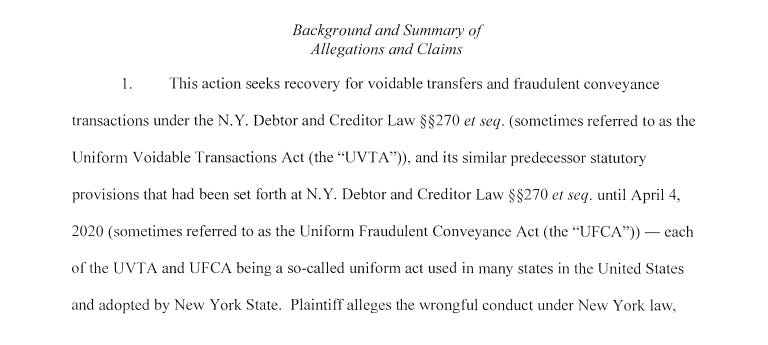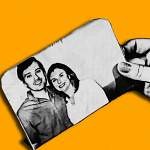What would it take for you to sue a person you once considered a friend? Having watched the slow emotional torture of court battles, it would take a lot for me – more than just being owed money. I’d need to feel a deep moral wrong was committed. I’d need to feel as though I’d been deliberately duped, misled, harmed or betrayed. And I’d need to feel that betrayal or harm was utterly unforgivable.
As Martin Shkreli’s world descended into chaos, so many of his former friends and associates ended up suing him that I struggled to make sense of their reasons. Were they as severely and intentionally wounded by him as I would have to be in order to make the same decision? Or were his relationships with these “friends” so transactional that they could cynically make public allegations against him (whether true or embellished) solely in pursuit of a payday? It was difficult to tell.
Between 2015 and 2021, at least 14 lawsuits (not including the ones by government agencies) were filed against Martin over claims of fraud, unpaid bills and other issues related to his business activities. The roster of litigants included an investor in one of his early hedge funds, a doctor who had invested in Retrophin, former colleagues who had helped him acquire small biotech KaloBios (which he led for roughly a month before his arrest), a former general counsel for Turing/Vyera, and even one of his former brokers and close friends, Ed Painter.
It seemed that anyone who could conceivably sue Martin, no matter how strong or weak the claim, did. For instance, Jason Koza, an artist who created images of Wu-Tang Clan members for a blog, alleged his work was stolen and incorporated into a book for the group’s famous single-copy album. He sued Martin for payment. But Martin, who bought the completed work for $2 million, didn’t legally owe the artist money; if anyone was at fault for copyright infringement, it was the producer. Martin was eventually dismissed from the case.
Oddly, Martin never seemed terribly bothered by the endless parade of lawsuits. Had I been named in well over a dozen legal complaints, collectively seeking many millions of dollars, I would have been eaten alive by anxiety. Trying to make myself useful, I kept track of many of the cases and pestered his lawyers sometimes when something interesting came up.
But Martin appeared confident that most of the matters were trivial, that judges would throw them out, or that demands could be negotiated down. He preferred to focus on future ambitions and schemes for how he could grow his company, even from behind bars.
Sometimes he was right. He was able to settle with Painter, for instance. The KaloBios crew was handled through the biotech’s bankruptcy. The former general counsel’s case, alleging defamation and breach of contract, was voluntarily dismissed “with prejudice,” which was a sign that it, too, had been settled.
But two of the litigants continued to show troublesome tenacity. One was George Yaffe, an investor in Martin’s early (and failed) Elea hedge fund. The other was the Retrophin investor, Thomas Koestler.
Yaffe’s son Lee, a healthcare investment banker, had invested $100,000 for his father in Elea. As the fund imploded, though, Martin tried to maintain a veneer of success while curbing his friend’s expectations of a payout. He asked Lee if he could “give back” the money to George with $25,000 in profits for a total of $125,000. After inevitable delays in payment, Lee eventually persuaded Martin to pledge, in writing, to hand over $250,000.
After Martin launched his MSMB funds, and ran those into the ground as well, and then Retrophin, he arranged to pay the balance plus another $105,000 via Lee by hiring him as a consultant. All was well until the FBI showed up at Lee’s door, while investigating the fraud case against Martin. Terrified, Lee handed the funds over to the government. He was the only investor repaid through Martin’s shenanigans who was compelled to give up the money.
But that wasn’t the end of things for the Yaffes. George filed a lawsuit against Martin referencing the $250,000 promissory note, which he claimed had gone unpaid. By then, based on 8% annual interest, the total should have been $400,000, he contended. By the time a New York State judge finally ruled for Yaffe, the amount had ballooned to nearly $426,000.
I watched the case with a stab of dread, wondering why Martin didn’t settle with him as soon as reasonably possible and keep the mess from getting worse. But I also wondered if Martin was able to pay the settlement – what, with a $7.4 million criminal forfeiture order hanging over his head, and the myriad obstacles to handling money issues while in prison. (Disciplinary infractions, for one thing, sometimes were meted out just for discussing financial transactions in email or on the phone.)
Then there was the even more nettlesome issue of Koestler. In Retrophin’s early days, Martin had persuaded Koestler, a doctor and seasoned drug company business adviser, to invest in the nascent startup. Overeager, Martin promised Koestler a generous share of the company. But later on, it proved difficult for Martin to arrange to transfer all of the shares owed to Koestler. In the midst of his wheeling and dealing, he was fired from Retrophin – with the loose end still hanging.
The doctor did not forget. He won a $2.6 million arbitration award against Martin, and then sued to make him pay. Rather than try to negotiate with Koestler, Martin strangely hoped the case would simply go away. Martin told me that a young man reached out to him on the internet (while Martin had access to a contraband cell phone) claiming to be Koestler’s son, and said that the doctor had forgiven the debt. I was skeptical.
“How do you even know it’s his son?” I asked. He didn’t really have an answer. He added, unhelpfully, that the account which had sent the message had been deactivated. I tried to see if I could track down this “son” but to no avail.
The Koestler case marched on through the court system. After a judgment was secured, the doctor’s lawyers went on a treasure hunt, looking for Martin’s assets. They sent information subpoenas to Martin’s close friends and associates (including me) demanding information about his finances and any money of his that we might be harboring.
(I replied honestly that I had received $11,000 via his brother – $9,000 as a contribution toward the $15,000 cost of freezing my eggs – which I did because Martin and I were discussing the possibility of trying to have a child – and $2,000 as partial reimbursement for my prison visit travel expenses.)
By April 2022, Koestler’s attorneys had amassed enough of the puzzle pieces he needed: They found Martin had directed 13 transfers, totaling over $2 million, to his family members and attorneys between June 28, 2019 and Feb. 18, 2021. The funds were “apparently the proceeds of litigation Martin Shkreli settled,” according to the complaint. The only settlement in his favor that I was aware of was with his former drug company Retrophin, which he had sued for improper termination.
They filed a new lawsuit against Martin, his lawyers, his brother and sister, and two friends, alleging “fraudulent conveyances.” They demanded that the money be returned along with “attorneys’ fees, costs and punitive damages.” (My frozen eggs were not mentioned in the filing.)
In a reply, lawyers for Martin and his sister maintained that they had done nothing wrong. The lawyers he had paid were in fact fighting, and initiating, substantial legal cases on Martin’s behalf. I knew he financially supported his siblings. And I was aware the two friends were owed money by him for work they had done, including by sending Martin scientific research papers while he was in prison. One of them I also knew to be suffering from financial problems, and Martin had wanted desperately to help him.
The web of Martin’s many creditors was such an awful tangle that I wondered many times why he hadn’t filed for bankruptcy protection. Bankruptcy courts are a refuge from a deluge of demands, imposing order on who gets what when. But either because he didn’t want more legal scrutiny, or maybe out of sheer ego and stubbornness, he didn’t. All the while, the list of friends and close associates who had counted on him, and whom he had failed, swelled like a menacing snowball.

















